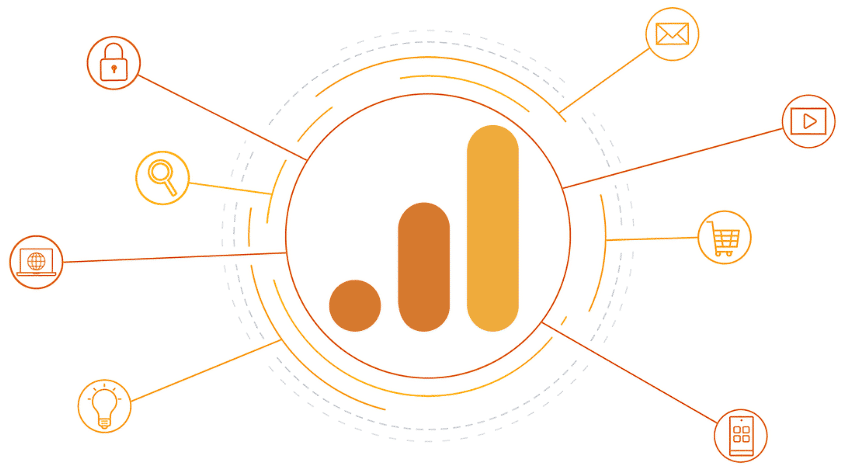
Have you ever wondered what all those Google Analytics snippets are for, and why your marketing team regularly asks you to add a new one? In this article, we’ll take a look at 5 Google Analytics features that can help developers and web designers improve the user experience on their website.
Google Analytics is one of the most popular marketing analytics platforms – and not just because it’s standard version is free.
Over a million organizations around the world use this platform to gain better insight into user behaviour on their websites.
However, for most web developers, their involvement with Google Analytics ends with installing the base code for the page views.
While there are already plenty of data points available with this basic implementation, they eventually miss out on other key features.
Due to the lack of data available to look at, there have even been cases where web developers or designers have chosen to remove a specific feature from the site, not realizing that most users use it regularly.
Therefore, here are five of the most important Google Analytics features that you can use to improve the user experience – and separate yourself from the rest of the web developers and designers:
- Understand the numbers
-
Using Google Analytics, you can determine the exact number of visitors returning to your website and visiting it for the first time.
- It goes without saying that if the content on your site is interesting enough (and optimized for SEO), visitors can ask for more after their first visit.
- You can check the “Frequency” section in Google Analytics to find out precisely which visitors have visited your site several times during a certain period.
- You can also determine which pages on your site are visited the most and determine what the average visitor prefers to see on your site.
- This allows you to give people more of the content they prefer and to reshape other less visited content to suit your visitors’ palates.
- Check the engagement rate

Keep in mind that Google only measures engagement if a visitor jumps from page to page.
Looking at your engagement levels is essential, as this allows you to find out if your content is engaging enough or if it will be necessary to put your energy into developing better content.
- Know your average number of pages per visit
It is important to check the number of pages your visitors click on before leaving your site. If the number is low, you can insert call-to-action buttons on your site or embed links to other pages within the content of a specific page.
Alternatively, you can provide recent or related articles at the bottom of a page to entice visitors to visit other pages.
If the number of pages that your average visitor clicks on increases significantly, it means that you have successfully increased the engagement value of your site.
You can also monitor the time visitors spend on your site and on each page. Pages with visitors who linger for longer periods of time obviously do better than pages with visitors who only stay for a few seconds.
Comparing successful and unsuccessful posts will help you determine what the common factor that attracts visitors is.
- Be aware of your bounce rate
Your bounce rate refers to how often a visitor lands on your site and literally bounces around without even stopping to look around. This can be due to a multitude of factors including an unattractive homepage, confusing layout, no recently updated posts, or poor website design. All of these things and other factors can provide enough reason for a visitor not to linger on your site.
To reduce your site’s bounce rate, you should try to design your homepage to be more visually appealing or add more topical content with enticing titles.
- Count the number of conversions by email
Google Analytics allows you to see how many of your visitors have subscribed to your website via email. And it’s not just about how many guests have subscribed with their email – you can also find out how many of your subscribers are actually visiting your site through email links.
Using this information, you will be able to verify if email marketing is an effective strategy for your site and if you need to devote more effort and resources to it.
You can also find out which browsers, Internet service providers, and operating systems the majority of your visitors are using to access your website.
To do this, click on the “Technology reports” category. The “Mobile presentation” category also tells you whether your visitors are using computers or mobile devices to visit your site.
Conclusion
Google Analytics uses standard graphics to show your visitor behaviour and your site’s conversion rate. The “Location” part uses a map to display the location of your visitors.
This information is useful for targeting social media and search ads to areas where you are already popular or to areas where you want to become more popular. In either case, the card will notify you of your success or failure.
Google Analytics continuously records the traffic to your website and delivers everything to you in a dashboard, in the form of charts and lists.
This dashboard tells you everything about real-time traffic, overall traffic, the origin of your visitors, their visit time, the number of page views per session, the referral sources, the bounce rate…. In short, absolutely everything!
There are many wonderful ways that Google Analytics can help you deliver better content and more value to your target audience, and increase your overall website performance.
Obviously, this list is not exhaustive, but I hope it’s a good place to start!Let me know in the comments section how you prefer to benefit from Google Analytics.
























